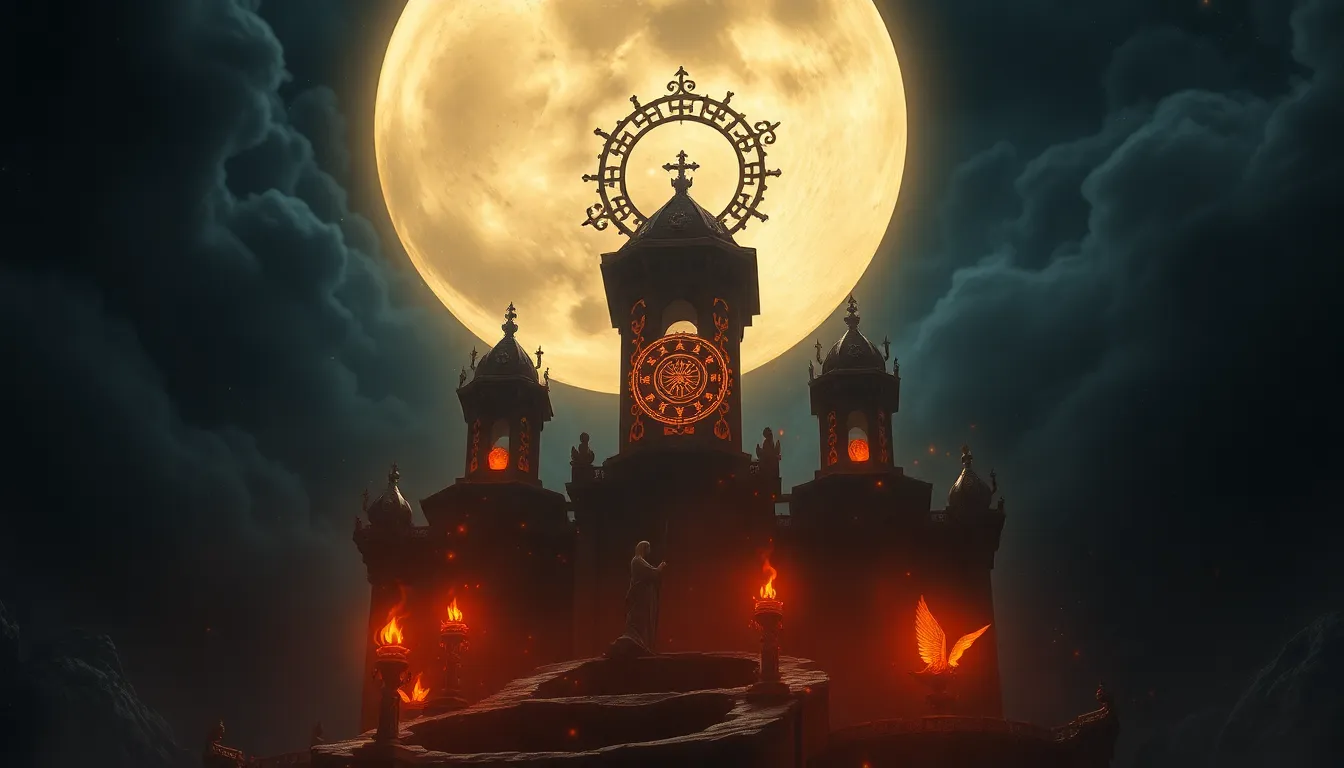The Talisman of the Moon: Myths of Night Magic
I. Introduction to Lunar Magic
Lunar magic refers to the spiritual practices and beliefs associated with the moon and its phases. This form of magic draws upon the moon’s energies, cycles, and symbolism, which have been revered across cultures for millennia. The significance of lunar magic lies in its connection to intuition, emotions, and the subconscious, making it a powerful tool for practitioners seeking to harness the mystical properties of the night sky.
Throughout history, the moon has occupied a central place in mythology. Its phases have inspired stories, rituals, and deities, reflecting humanity’s fascination with this celestial body. The cultural importance of the moon transcends borders, showing up in folklore, art, and religious practices across the globe.
II. Historical Perspectives on Moon Myths
A. Ancient civilizations and their lunar deities
Many ancient civilizations worshipped lunar deities, attributing various traits and powers to them. For instance:
- Egypt: The moon god Khonsu was associated with timekeeping and healing.
- Greece: Selene, the goddess of the moon, was depicted driving a chariot across the night sky.
- Mesopotamia: Sin, the moon god, was a significant figure, influencing agriculture and time.
B. Evolution of moon myths through different cultures
As cultures evolved, so did their interpretations of the moon. In some societies, the moon was seen as a guardian, while in others, it was a harbinger of change. These myths often intersected with agricultural practices, aligning lunar phases with planting and harvesting seasons.
III. The Symbolism of the Moon in Various Cultures
A. The moon as a symbol of femininity and fertility
The moon has long been associated with femininity, often symbolizing fertility, intuition, and the cycles of life. Many cultures have linked the moon to the goddess archetype, representing the nurturing and guiding aspects of the divine feminine.
B. The moon’s connection to cycles, time, and agriculture
The lunar cycle, lasting approximately 29.5 days, reflects the rhythms of nature and human life. The phases of the moon—new, waxing, full, and waning—are often tied to agricultural practices, guiding when to plant and harvest crops. This cyclical understanding of time enhances the moon’s role in various cultures as a timekeeper of sorts.
IV. The Talisman: Definition and Significance
A. What constitutes a talisman and its purpose
A talisman is an object believed to hold magical properties, often used for protection, empowerment, or attracting specific energies. In the context of lunar magic, moon talismans are crafted to harness the moon’s energies and connect the practitioner with its mystical qualities.
B. Historical examples of moon talismans and their uses
Historically, moon talismans have taken various forms, including:
- Amulets: Jewelry or charms inscribed with lunar symbols to protect the wearer.
- Moonstones: A gemstone believed to enhance intuition and connect with lunar energies.
- Moonwater: Water infused with lunar energy, used in rituals for cleansing and manifestation.
V. Global Myths Surrounding the Moon
A. Native American lunar myths
In Native American cultures, the moon is often personified as a powerful female figure. Various tribes have myths surrounding the moon’s creation, its role in guiding nocturnal animals, and its influence on human behavior.
B. Greek and Roman lunar deities and their tales
In ancient Greece, the moon was personified by Selene, while in Roman mythology, she was known as Luna. These deities were often associated with love, beauty, and mystery, embodying the allure and enigma of the night.
C. Asian moon legends and their cultural implications
Asian cultures, particularly in China, celebrate the moon during festivals like the Mid-Autumn Festival. Legends such as Chang’e, the moon goddess, highlight themes of love and sacrifice, demonstrating the moon’s deep-rooted significance in cultural narratives.
VI. The Role of the Moon in Witchcraft and Magic
A. Moon phases and their influence on magical practices
Different phases of the moon are believed to enhance various magical workings:
- New Moon: A time for new beginnings and setting intentions.
- Waxing Moon: Ideal for growth, manifestation, and attracting desires.
- Full Moon: The peak of energy, perfect for releasing and banishing.
- Waning Moon: A time for reflection, letting go, and protection.
B. Rituals and spells associated with lunar energies
Practitioners often engage in rituals during specific moon phases, utilizing herbs, crystals, and candles to enhance their intentions. Some common practices include:
- Creating moonwater for cleansing and empowerment.
- Performing rituals under the full moon for heightened energy.
- Writing intentions on paper during the new moon and burying them to manifest.
VII. Night Magic: The Influence of the Moon on Nature
A. The moon’s impact on tides and nocturnal wildlife
The moon’s gravitational pull significantly affects the tides, impacting marine life and coastal ecosystems. Additionally, many nocturnal animals have evolved behaviors tied to lunar phases, using the moonlight for hunting or navigation.
B. Folklore surrounding nighttime creatures and lunar connections
Folklore often attributes magical qualities to nighttime creatures, such as owls and wolves, viewing them as messengers of the moon. Stories of werewolves and other mythical beings illustrate the moon’s influence in shaping cultural narratives about the night.
VIII. Modern Interpretations of Moon Myths
A. The resurgence of interest in lunar magic in contemporary spirituality
In recent years, there has been a revival of interest in lunar magic and spirituality. Many individuals are drawn to the moon’s symbolism as a source of guidance and empowerment, incorporating it into their daily lives through rituals and meditative practices.
B. The role of the internet and social media in sharing moon-related practices
The internet has played a crucial role in the resurgence of lunar magic, with social media platforms providing spaces for practitioners to share their experiences, rituals, and insights. This global community fosters a sense of connection and collaboration among those drawn to the moon’s mystical allure.
IX. Creating Your Own Moon Talisman
A. Step-by-step guide for crafting a personal lunar talisman
Creating a personal moon talisman can be a meaningful experience. Here is a simple guide:
- Choose a base: Select a material that resonates with you, such as clay, crystals, or metals.
- Set your intention: Reflect on what you want to attract or manifest with your talisman.
- Engage with the moon: Craft your talisman during a specific moon phase that aligns with your intention.
- Empower your talisman: Hold it in your hands, visualize your intention, and charge it with lunar energy.
B. Suggested materials and rituals for empowering your talisman
Consider using the following materials to enhance your talisman:
- Crystals like moonstone or selenite for their lunar properties.
- Herbs such as chamomile or mugwort for their magical associations.
- Symbols of the moon, like crescent shapes or reflective surfaces, to amplify energy.
X. Conclusion: Embracing the Mystique of the Moon
A. Reflection on the enduring legacy of moon myths
The myths surrounding the moon have endured through time, reflecting humanity’s continuous quest for understanding and connection to the universe. These stories and practices provide insight into our relationship with nature, cycles, and the mysteries of life.
B. Final thoughts on the significance of night magic



